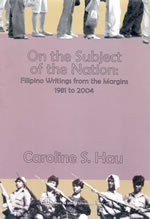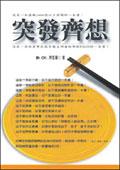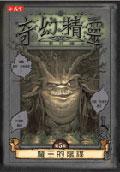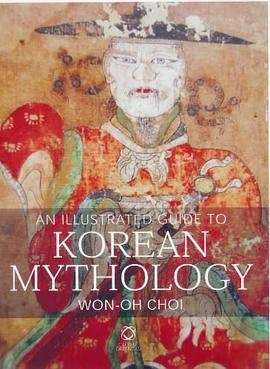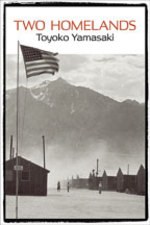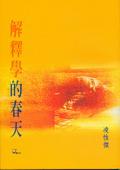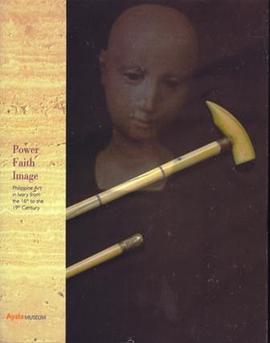

具体描述
【Contents】
Foreword -- 7
by Fernando Zobel de Ayala
Preface -- 8
by Florina H. Capistrano-Baker
Acknowledgements -- 10
Power: Ivory and Global Trade -- 12
[Medicinal Ivory -- 19]
[Elephants Ahoy! -- 29]
[Ojos -- 30]
[Coming to Terms with Ivory Santos -- 31]
[Historic Ivory Madonnas -- 34]
[Ninos y Ninas -- 42]
by Regalado Trota Jose
Faith: Evangelization in Asia and Cultural Exchange -- 46
[Passages from Mahal na Passion ni Jesu Christong Panginoon Natin na Tola by Gaspar Aquino de Belen -- 69, 70]
[Saints and Their Symbols in Philippine Religious Imagery -- 74]
[Quita y Pone and Other Forms of Ivory Santos -- 92]
by Regalado Trota Jose
Image: Artisans and Patronage -- 96
[The Mysterious Suksok Behind the Virgin -- 110]
[Identification and Dating of Fil-Hispanic Ivories -- 112]
[Sculptors with Studios in Manila: 19th to Early 20th Century -- 122]
[Plunder -- 130]
[Ivory Images Lost during the Filipino-American War, 1899-1902 -- 131]
[Loss -- 133]
by Regalado Trota Jose
The Ivories -- 134
by Ramon N. Villegas
Appendices
Three Centuries of Philippine Ivory -- 268
by Martin L. Tinio, Jr.
Timeline and Maps -- 286
by Regalado Trota Jose
Bibliography -- 294
【Excerpts】
Coming to Terms with Ivory Santos
by Regalado Trota Jose
The ivory santo, among Philippine artworks, is probably among the most ubiquitous and the most deeply embedded in the Filipino experience and identity. Most Filipinos, rich or poor, have memories of these carved Christian religious images in their resplendent robes, whether standing in a home shrine or in a church niche, their glass eyes silent witnesses to their daily lives. At the same time, these religious ivory carvings arguably have the most international character of Philippine artworks, the material brought in from Africa and elsewhere in Asia to be worked on by local and Chinese artists following Western ideals.
Despite the santos' ubiquity, not many know even such basic facts as where these carvings were made and where the ivory came from. Ironically, much of the study on these precious objects of our heritage has been carried out not in the Philippines but in Spain, where they are exhibited as "Hispano-Filipino." This catalogue attempts to cast light on these familiar objects, revealing how deeply intertwined their rich history is with the country.
Serious studies on the questions regarding places of origin and craftsmanship of Philippine ivory santos have only appeared within the last 20 years. Pioneering works are those by Esperanza Gatbonton,(1983), Margarita Estella Marcos,(1984), Derek Gillman (1984), and Beatriz Sanchez Navarro de Pintado, (1986). According to the findings of Gatbonton and Estella, the Philippines was a major producer of these carved ivory images of Christian saints. Estella, whose dissertation involved the study of santos in Spain, was able to locate, identify, and define a large number of 17th and 18th-century pieces of Philippine [end of page 31] manufacture. [Note 1] Gatbonton went on to claim that though the early carvers were Chinese, native Filipinos eventually produced the great majority of ivory santos. She also pointed out artistic differences between these and those done in the former Portuguese colonies of Macao off China and Goa in southwest India. [Note 2]
But Gillman, citing Chinese chronicles, found little evidence for ivory figure carving in 16th century Macao and instead credited Fujian on mainland China as the center for such work and the source of the early ivory santos mentioned in Philippine accounts. [Note 3] Sanchez Navarro concluded that the majority of early oriental-style Christian ivories in Mexico was produced by the Chinese, whether on the mainland or in the Philippines. [Note 4]
Early santos incorporated oriental features but as the art developed, santos were very much influenced by Western ideas. Philippine ivory santos were esteemed as gifts for Spanish and Latin American, especially Mexican, churches and manors. They eventually found their way into collections in other parts of Europe as far as Poland and in the United States. Recognition of the Philippine origin of these pieces began to creep into Spanish catalogues as early as the 1918 when Mexican scholar Romero de Terreros used the descriptive filipino. [Note 5] Narciso Sentenach, a compiler of a catalogue of the artistic heritage of Burgos in 1921, mentioned three ivory figures of Christ
and the two thieves on crosses of wood from the Philippines, "where the sculptures must have been carved by native hands but with rare perfection and among the best of its kind." A Santo Domingo de Guzman was described as "Philippine work, well executed." [Note 6]
A large amount of information, in the form of research, collections, or published literature, has surfaced in the years since then. The present work seeks to keep the reader abreast with these developments. Esperanza Gatbonton and this author have written short works on Christian ivories in Asia and, in particular, the Philippines, but the bulk of relevant material has appeared abroad, much of it in Spanish and Portuguese. It has been a challenge to keep up with new data or revisions of dating provided by the prolific Margarita Estella Marcos. The professor herself, here gratefully acknowledged, provided much of the material in this catalogue.
Additional material was obtained through trips abroad. Such opportunities were provided by research or study grants, not always related to ivory. In fact, some investigation -- such as precious hours at the New York Public Library -- was conducted during respites from concert tours while this author was a member of the Philippine Madrigal Singers. Countless churches and museums in Spain, Mexico, and Macao were visited. Assistance from the Pacific Asia Museum in Pasadena, California, headed by David Kamansky, [end of page 32] for an earlier work on ivory must also be acknowledged.
Documentation of ivory santos still in the custody of churches throughout the country was a significant component of this project. Collaboration among the Ayala Foundation, Inc., the University of Santo Tomas, and the Catholic Bishops' Conference of the Philippines made it possible for this author to travel and photograph santos all over Luzon and Visayas -- and the photographs appear throughout this catalogue. Most of the ivories photographed appear here in print for the first time. The names of those involved in this remarkable, if whirlwind, undertaking are gratefully mentioned in the Acknowledgments.
Much, however, still has to be learned about this rich art form -- and this catalogue only creates a base for further exploration. It's an exciting task and one that not only will deepen our understanding of one art form, but also of the Philippines and its history.
Notes:
1 Estella Marcos, Margarita M. 1984. La Escultura Barroca de Marfil en Espana. Madrid: Consejo Superior de Investigaciones Cientificas. 2 vols.
2 Gatbonton, Esperanza Bunag. 1983. Philippine Religious Carvings in Ivory. Manila: Intramuros Administration.
3 Gillman, Derek. 1984. Ming and Qing ivories: figure carving. In Chinese Ivories from the Shang to the Qing. ed. William Watson, London: The Oriental Ceramic Society and the British Museum.
4 Sanchez Navarro de Pintado, Beatriz. 1986. Marfiles Cristianos del Oriente en Mexico. [Mexico City]: Fomento Cultural Banamex, A.C.
5 Estella Marcos 1984,1, 61-62 (Romero de Terreros). Still, recent visits to museums espied an obviously Filipino ivory image of a standing Santo Nino labeled as Norwegian (in Barcelona) and another of the Crucified Christ as Gothic (in Paris). It must also be stated that filipino is still used in a number of Spanish museums to designate objects with an Oriental character.
6 Ibid, II, 189, 283 (Sentenach). [end of page 33]
Power
by Ramon N. Villegas
Ivory from the elephant, the largest land mammal to survive the Ice Ages, was proof of man's power over nature, and enhanced the majesty of sovereigns.
In the Philippines, ivory could already be associated with the power of the state by the 10th to the 13th century. Ancient ships plying the China Sea carried ivory along with other prestige commodities traded for local goods. Indigenous religions made use of ivory for some images.
In Europe, ivory was a preferred material for sacred sculpture. The increasing size of Christian carvings from the 13th century reflected the magnification of the imperial imagination. In 1492, Spain discovered the New World. Other European nations took to the seas, racing around Africa and into the Indian Ocean. In taking Malacca in 1511, Portugal sought to control the Far East. Spain sailed into the Pacific Ocean, and from the Philippines, sought to rule the Far West.
But Filipinos were as much empowered by, as they were subject to, Spanish domination. Manila became the first Global City. The Philippines and Filipinos became a vital link between East and West. (rnv) -- [end of page 13]
Faith
by Ramon N. Villegas
The Iberian sovereigns claimed the titles of Catholic Kings, and comprised an increasingly ambitious branch of the Hapsburg dynasty. The Pope needed them in the struggle against Protestantism. At the same time, with Islam ruling north Africa and the Middle East, European overseas expansion had become imperative. The papal division of the world between Portugal and Spain was motivated by concern that newly found heathen lands not fall into the hands of heretics. Conquest by the Sword was justified by the need to evangelize with the Cross.
Only a handful of missionaries came to the Philippines in the 1560s to begin the conversion of around a million inhabitants. Even at the end of the Spanish era there were only a few thousand ecclesiastics in a population of more than ten million. Yet nearly all of the Filipinos had become believers who flocked to a multitude of fine and rich churches. In the Philippines, Christianity became an Asian religion.
More importantly, Filipinos were among those who helped to bring the Gospel to other lands. And through their art in ivory, Filipinos helped to inspire in others the Faith that had become their own.(rnv) [end of page 47]
Image
by Ramon N. Villegas
From the late 16th century onward, the FPhilippines was gradually molded by Spain in its image and folded into an empire where the sun never set. Under the Crown and the Cross, the indigenous populace raised the Walled City of Manila and laid out new towns all over the islands. They crossed the Pacific to the Americas, manned ships, and wielded arms as they adventured across East Asia. At the same time hundreds of migrants came in from Europe, the Americas, China, Japan, India, Africa.
All this was reflected in Filipino art. Thus carvings in ivory in the Philippines, from the 16th to the 19th century, are Filipino in that, using African and Asian materials, motivated by a European world view rooted in Middle Eastern culture, they expressed ideas, conveyed emotions and depicted the human experience in works of art meant not only for themselves but for the Americas, Europe, the world.
From the late 18th century, the sun gradually set over the Spanish empire. Artisans started carving more and more for the Filipino sangbahayan (household) and angkan (clan), rather than Spanish autocratic church-and-state. By the end of the 19th century, Filipinos had come to imagine their own power, faith and image as a free people and a new nation. (rnv) [end of page 97]
The Ivories
by Ramon N. Villegas
This exhibition of almost 400 objects made of ivory is a landmark in Philippine art history. Aside from being the largest ever assembled, it is the most comprehensive in terms of chronology, representation of types, forms, and variety in subject and technique. It is the best of what could be borrowed, for a substantial period of time, from private and public collections in the Philippines.
In the early 1980s, the Intramuros Administration mounted several exhibitions dedicated to Philippine ivory santos in its collection, curated by Esperanza Bunag Gatbonton. In 1990, "Images of Faith" was jointly curated by Regalado Trota Jose and David Kamansky of the Pacific Asia Museum in Pasadena, California. After a year in the United States, the pieces, with some additions, were exhibited at the Ayala Museum.
This book is the most comprehensive survey of Philippine art in ivory to date. A generous research grant from Ayala, in cooperation with the University of Santo Tomas Museum and the Catholic Bishops' Conference of the Philippines made possible the documentation of the many other works that could not be borrowed for the exhibition. (rnv) [end of page 135]
作者简介
【Regalado Trota Jose】has worked extensively for the protection and appreciation of the cultural heritage of the Catholic Church. He received the A.B. in Anthropology and the M.A. in Philippine Studies from the University of the Philippines. He was conferred the Cultural Center of the Philippines Centennial Honors for the Arts for outstanding scholarship in Philippine art and architecture of the Spanish colonial period. His publications include Images of Faith: Ivory Carvings from the Philippines; Simbahan: Church Art in Colonial Philippines 1565-1898; Impreso: Philippine Imprints 1593-1811; and Visita Iglesia Bohol. He is a faculty member in the Cultural Heritage Studies Program at the University of Santo Tomas.
【Ramon N. Villegas】 is an independent curator whose projects include work on the permanent exhibition of the Bangko Sentral ng Pilipinas Gold Collection, Tresors Philippine for the Musee de l'Homme in Paris, France, and Sheer Realities in New York, Seattle, and Manila for the Asia Society. He is the author of The Philippine Jewelry Tradition; "Life in the Colony" (Volume IV, Kasaysayan: The Story of the Filipino People); and Hiyas: The Philippine Jewelry Heritage. He graduated from the A.B. Honors Program of De La Salle University, majoring in literature.
【Martin Tinio, Jr.】 was educated at De La Salle College, Manila; Zurich, Switzerland; and New York University. A passion for art, antiques, genealogy, history, architecture, cuisine, and gardens has led him to travel all over the Philippines and extensively around the world. He has documented over two thousand period houses and co-authored Philippine Ancestral Houses.
目录信息
读后感
评分
评分
评分
评分
用户评价
相关图书
本站所有内容均为互联网搜索引擎提供的公开搜索信息,本站不存储任何数据与内容,任何内容与数据均与本站无关,如有需要请联系相关搜索引擎包括但不限于百度,google,bing,sogou 等
© 2026 book.wenda123.org All Rights Reserved. 图书目录大全 版权所有


